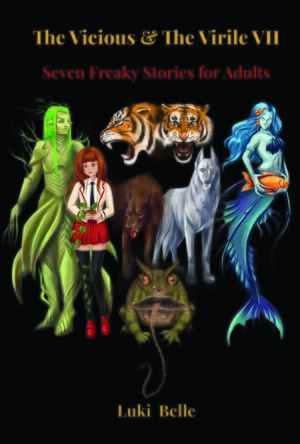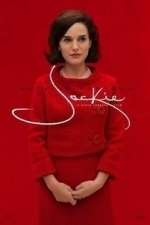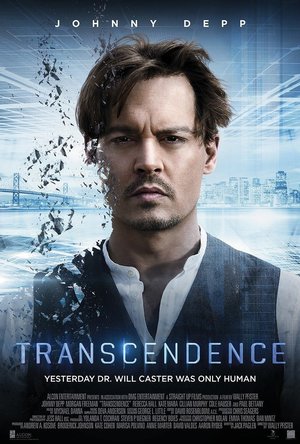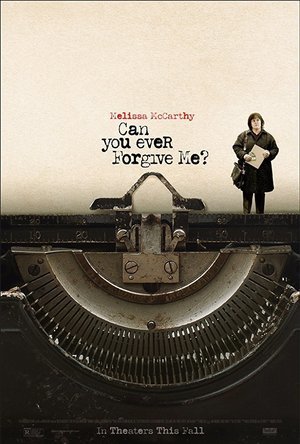
Video Edit
Photo & Video and Entertainment
App
Video Edit is the FASTEST way to edit and render videos on the iPhone, iPod Touch and iPad. Now...

Voice Answer
Business and Reference
App
Voice Answer gives answers on many topics and can assist you with a lot of tasks. The stunning 3D...

BÁO ONLINE - Báo Mới, Tin Mới
News and Entertainment
App
Ứng dụng giúp các bạn đọc tất cả các báo điện tử hàng đầu Việt Nam dễ...

Báo Mới Online - Đọc Báo, Tin Tức, Tin Mới 24h
News and Utilities
App
Ứng dụng giúp các bạn đọc tất cả các báo điện tử hàng đầu Việt Nam dễ...

Free HD Compass
Navigation and Utilities
App
The best and unique free High-definition compass for iPad and for iPhone! Simple beautiful rustic...
Bob Mann (459 KP) rated Jackie (2016) in Movies
Sep 29, 2021
Through this interview we flashback to see Jackie as the young First Lady engaged in recording a TV special for a tour of the White House: nervous, unsure of herself and with a ‘baby girl’ voice. This contrasts with her demeanour in the interview which – although subject to emotional outburst and grief – is assured, confident and above all extremely assertive. We live the film through Jackie’s eyes as she experiences the arrival in Dallas, the traumatic events of November 22nd in Dealey Plaza, the return home to Washington and the complicated arrangement of the President’s funeral.
This is an acting tour de force for Natalie Portman, who is astonishingly emotional as the grief-stricken ex-first lady. She nails this role utterly and completely. Having already won the Golden Globe for an actress in a dramatic role, you would be a foolish man to bet against her not taking the Oscar. (I know I said just the other week that I though Emma Stone should get it for “La La Land” – as another Golden Globe winner, for the Comedy/Musical category – and a large part of my heart would still really like to see Stone win it…. But excellent as that performance was, this is a far more challenging role.)
In a key supporting role is Peter Sarsgaard (“The Magnificent Seven”) as Bobby Kennedy (although his lookalike is not one of the best: that accolade I would give to Gaspard Koenig, in an un-speaking role, as the young Ted Kennedy).
Also providing interesting support as Jackie’s priest is John Hurt (“Alien”, “Dr Who”) and, as Jackie’s close friend, the artist Bill Walton, is Richard E Grant (“Withnail and I”, who as he grows older is looking more and more like Geoffrey Rush – I was sure it was him!).
Director Pablo Larraín (whose previous work I am not familiar with) automatically assumes that EVERYONE has the background history to understand the narrative without further explanation: perhaps as this happened 54 years ago, this is a bit of a presumption for younger viewers? Naturally for people of my advanced years, these events are as burned into our collective psyches as the images in the Zapruder film.
While the film focuses predominantly, and brilliantly, on Jackie’s mental state, the film does gently question (via an outburst from Bobby) as to what JFK actually achieved in his all too short presidency – ‘Will he be remembered for resolving the Cuban missile crisis: something he originally created?’ rants Bobby. In reality, JFK is remembered in history for this assassination and the lost potential for what he might have done. I would have liked the script to have delved a little bit further into that collective soul-searching.
This is a very sombre movie in tone, from the bleak opening, with a soundtrack of sonorous strings, to the bleak weather-swept scenes at Arlington cemetery. The cinematography (by Stéphane Fontaine, “Rust and Bone”) cleverly contrasts between the vibrant hues of Jackie’s “Camelot” to the washed-out blueish tones of the post-assassination events. If you don’t feel depressed going into this film, you probably will be coming out! But the journey is a satisfying one nonetheless, and the script by Noah Oppenheim – in a SIGNIFICANT departure from his previous teen-flick screenplays for “Allegiant” and “The Maze Runner” – is both tight and thought-provoking.
Overall, a recommended watch which comes with a prediction: “And the Oscar goes to… Natalie Portman”.
Finally, note that for those of a squeamish disposition, there is a very graphic depiction of the assassination from Jackie’s point-of-view…. but this is not until nearly the end of the film, so you are reasonably safe until then!
Also as a final general whinge, could directors PLEASE place an embargo on the logos of more than two production companies coming up at the start of a film? This has about six of them and is farcical, aping the (very amusing) parody in “Family Guy” (as shown here).

The Vicious & The Virile VII: Seven Freaky Stories for Adults
Book
A collection of short horror stories, The Vicious and The Virile VII offers a captivating...
Dark Fantasy Short Story Collection
Gareth von Kallenbach (980 KP) rated Transcendence (2014) in Movies
Aug 6, 2019
Knight Trilogy) takes on an ambitious film both visually and thematically for his first attempt at the
director chair. And while he hits all the visual cues you would expect from someone who has worked
so closely with Christopher Nolan on several films, he does less so when it comes telling us a story
that works in the world that he is presenting to us on screen. And thus this film falls flat, muddled and
fragmented in its story.
Visually the film provides you with framing and movement that that is easy to follow and pleasing to
look at. Along with the score, the look of the film constantly feels like it is taking you somewhere grand
or eye-opening. However it never quite gets there as the passage of time is not clear which creates a
fragmented sense of reality.
Furthermore, because of the structure of the film, the viewer is expecting a form of payoff or definitive
stance from the message of the story. But instead the story falls flat upon itself by not clearly defining
the characters motivations on screen. That is not to say that the film is acted poorly, it is just that
there really isn’t any reason to believe the motivations of the characters because they were never
shown to us. We are supposed to believe that the love between Johnny Depp as Dr. Will Caster, the
leading artificial intelligence researcher and his wife Evelyn (Rebecca Hall) is the reason why the plot is
developing. But we are never truly shown the reason why their love is so strong. Furthermore, when Dr.
Caster is shot to stop him from furthering his research, his own wife Evelyn barley even sheds a tear.
Why then would I believe her ridiculous motivations to follow a self-aware artificial intelligence that she
believes is her husband, down the rabbit hole for years without constant reassurance that it is in fact her
Husband, which we never really get any explanation of? Nor do we get any reassurance that she loves
him, other than an occasional had touching a computer screen. I get that people greave in different
ways, but not all ways work on advancing a story on film.
Perhaps the biggest disjointed story development is when the Caster’s close friend and colleague Max
(Paul Bettany) is kidnapped by extremists for two years and no one is looking for him. Furthermore,
when he reappears after being told that two years has passed, he is now trying to stop the evolution of
AI that he helped create without more than a mere sentence. The film keeps reminding us that people
fear what they don’t understand, which is right. I fear I don’t understand the motivation behind the
characters without being shown or explained what happened to them or why they are doing something.
As if this was not enough, at no real point did any of ancillary characters matter. Cillian Murphy
represents the government at large as the lone FBI agent in the film. But his purpose is meaningless as
he does nothing to stop anything suspicious until the final act. What is worse, is that he was brought in
to stop the extremist (that are mostly forgotten after the first act) but then sides with them to attempt
to stop the AI. The same AI he let grow out of control in the first place.
I am not even going to go into the “pod-people” plot as it seemed as a way to try to advance the story
to an ending. As if these good scientists, who are just trying to help the world, have crossed the line or
something. This, which Evelyn still doesn’t see a problem with and continues to allow for years until
Morgan Freeman shows up and tells her to get out of her situation and away from the AI. At which
point, she mulls it over for perhaps a day and decides she is done. Ugh. You have come this far with no
reason, why stop? Just keep going?
I, like most movie goers, am willing to suspend my disbelief as long as the reasons for what I am
watching on screen make sense in the world shown to me. A few scenes here or there that provided
explanation or reason why is should care about these characters would have been appreciated and
helped this movie be less disjointed and muddled. Because of this, I really cannot recommend this film
to anyone except those who want to think abstractly about AI. But be warned, thematically, there is no
clear stance on weather that is good or bad either.

Báo Mới Online Full - Đọc Tin Tức, Tin Mới 24h
News and Utilities
App
-- Phiên bản Full không có quảng cáo -- Ứng dụng giúp các bạn đọc tất cả...
Bob Mann (459 KP) rated Can You Ever Forgive Me? (2018) in Movies
Sep 28, 2021
For McCarthy is a revelation in a dramatic role which, whilst having moments of levity, is largely downbeat and very moving.
The Plot.
Based on a true story, McCarthy plays Lee Israel; a cat-loving bestselling biography writer who has seen better days. Her work is now so poor that her publisher (“3rd Rock”‘s Jane Curtin) no longer returns her call. She doesn’t help herself by having an alcohol problem and an ability to get on with other people that borders on the sociopathic.
Stumbling by accident on a letter from a famous author, she sells it for a decent sum to a dealer in such documents and is asked if she has any similar documents. What follows is a criminal trail of counterfeiting and grand larceny, into which she introduces her only friend: the gay and itinerant Jack Hock (Richard E. Grant).
With newfound success can Lee find criminally-induced happiness? Or will the authorities eventually catch up with her and Jack.
A great double-act.
The reason to see this film is the tremendous double-act between McCarthy and Grant which is just magic. Both have been lauded with nominations during awards season, and both are richly deserved.
Without aspersions against the excellent Shakespearean actress Brenda Fricker, this film could have turned into a 2 hour downer featuring a literary-equivalent of the bird-woman from “Home Alone 2”. The fact it doesn’t – notwithstanding a Central Park scene that just about re-films the final scene of HA/2! – is wholly down to McCarthy’s stunning performance. Although having some scenes of darker comedy, the majority of her performance is dramatically convincing as the conflicted and depressed victim of chronic writer’s block.
Grant as well is just superbly entertaining, all teeth and over-confidence in the face of all odds. If he wasn’t up for an Oscar nomination at one point in the process, then his final scene in the film absolutely nailed it. If you are not moved by this scene, you have a very hard heart indeed.
Ephron-esque.
The script is by the relatively unknown Nicole Holofcener and the debut writer Jeff Whitty, who are nominated for best adapted screenplay for both BAFTA and Oscar award: not bad going! It’s ironic that the late Nora Ephron is (comically) referenced by the screenplay, since there is a strong whiff of Ephron-esque about the film. (This is further enforced through reference to struggling book shops, that harked me back to “You’ve Got Mail”). The movie’s directed by the up and coming Marielle Heller, who’s debut was the well-regarded “Diary of a Teenage Girl”.
Cheer on the anti-hero.
Once again, like last year’s disappointing “Ocean’s 8“, for the film to work we have to emotionally support the actions of a criminal woman and, in this case, her damaged man-friend. This movie almost gets away with it, in that a) the ‘victims’ are unseen wealthy ‘collectors’ who ‘probably have too much money to burn’ anyway and b) Lee expresses such a wondrous delight in the quality of her work; delight that pulls her out of her destructive downward spiral of depression. It’s hard not to get behind her to at least some degree.
Given the movie dives into subjects including animal – or at least animal owner – cruelty, death, depression, homelessness and terminal illness, will you enjoy it? My bell-weather here is my wife Sue, who was unwillingly dragged along to see this, but ended up enjoying it mightily.


